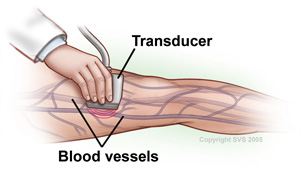
Poor Circulation
Symptoms
Poor circulation is when there is inadequate blood flow to certain areas of the body, in particular the legs and feet. This is called peripheral vascular disease or peripheral artery disease.
Your arteries deliver oxygen-rich blood from your heart to other parts of your body including your arms and legs. Healthy arteries are smooth and unobstructed, allowing blood to flow freely to the legs and provide oxygen, glucose, and other necessary nutrients to your legs. Typically with age, plaque, a sticky substance made up of fat and cholesterol, builds up in the arteries. Plaque narrows the passageway within the arteries and causes them to become stiff causing poor circulation in legs.
The poor blood circulation in legs results in less oxygen being delivered to all parts of the body, which can hinder the body’s ability to function normally.

Who is at Risk?
There are many causes of poor circulation, including diabetes, high blood pressure and high cholesterol. Smokers are also at a high risk. Here are other risk factors.
- Age
- Gender—males are more prone to the condition than females
- High blood pressure
- Diabetes
- Smoking
- High cholesterol
- Obesity
- Lack of exercise
- Family history of vascular problems
Poor circulation that is not addressed can develop into a serious disorder, and can lead to amputations, strokes and heart attacks.
There is a lot you can do to prevent poor circulation in your legs. In addition to following your doctor’s advice, you can make lifestyle changes that will greatly reduce your risk factors for poor circulation.
Smoking cessation not only improves blood circulation but also prevents a host of other diseases, including diabetes. Regular exercise — at least 30 minutes a day — will help tremendously. Eating a healthy diet with fruits and vegetables is also important for good health, and helps the body function normally.
Symptoms
There are many causes for leg pain, but one of the main reasons is poor circulation, which can lead to numerous health conditions or worsen those you already have. Here are other symptoms of poor circulation.
- Painful cramping of the muscles in the hip, thigh, or calf after activity (claudication)
- Leg numbness or weakness
- Coldness in the lower leg or foot, compared with other parts of the body
- A sore, poorly healing wound or ulcer on the toe, foot, or leg
- Change in skin color or shiny skin on the legs
- Hair loss or slower hair growth on the feet and legs
- Slower toenail growth
- No pulse or a weak pulse in the legs or feet
What Tests are Needed?

Ankle-Brachial Index (ABI)
You may be given an Ankle-Brachial Index (ABI) test to compare the blood pressure in your ankle and your arm, which are normally the same. If the blood pressure in your ankle is significantly lower, that could be a sign of narrowing leg arteries.
Doppler Ultrasound
Ultrasound may be used to determine which arteries are blocked. Often, angiography is used to find the specific location and pattern of any blockages. Angiography helps specifically identify the best way to correct aortoiliac disease. Both MRA and CTA are also helpful in outlining the extent of aortoiliac disease.
Testing can be done in the PVA Vascular Lab.

Foot Care
Foot care is especially important for those with poor circulation in legs or bad circulation in foot. Some ways to better care for your feet include:
Treatments
The first step is to see a doctor vascular surgery immediately if you have any of the risk factors or symptoms of poor circulation in legs. A simple, painless and noninvasive test called a duplex ultrasound can determine if you have bad circulation and the severity of the condition.
Based on the severity of your condition, a vascular specialist doctor will determine the best treatment option for you. This may include lifestyle changes, medications, minimally invasive cath lab procedures such as angioplasty or stenting, which can be done in a PVA office, or open bypass surgery.
At PVA, we are blood circulation experts. Each and every day, we focus our knowledge and expertise on improving circulation in feet and throughout the body to help our patients avoid amputation. Vascular surgeons are the only doctors treating blood circulation problems today who can perform all treatment options available including medical management, minimally invasive procedures and open surgical repair including bypass.













